As a key equipment in the packaging and printing industry, the technological innovation of the hot stamping foil slitting machine directly affects the efficiency, accuracy and cost of the hot stamping process. In recent years, with the in-depth application of automation and intelligent technology, a number of breakthroughs have been made in this field, providing new solutions for efficient and precise production in the industry. The following is the technological breakthrough of the current hot stamping foil slitting machine and its industry value analysis:
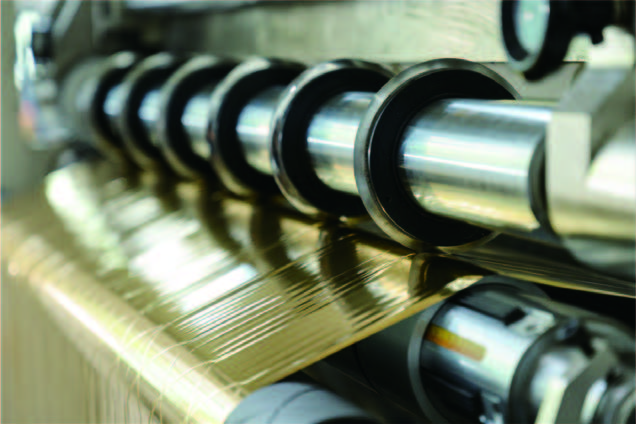
First, the core technology breakthrough point
1. High-precision dynamic slitting system
◦ Closed-loop control of servo motor + linear guide rail, the slitting accuracy can reach ±0.02mm, which solves the problem of cumulative error caused by traditional mechanical transmission.
◦ Laser real-time deviation correction technology (CCD visual inspection) can automatically correct the deviation of the coil and ensure the edge flatness of the hot stamping foil.
2. Intelligent tension control
◦ The multi-stage magnetic particle brake cooperates with the PID algorithm to achieve constant tension (fluctuation <1%) in the whole process of unwinding, slitting and rewinding, and avoid tensile deformation or wrinkles of the material.
◦ Preset tension parameter library for different materials (PET, OPP, PVC, etc.), and switch the production plan with one click.
3. AI-driven predictive maintenance
◦ Real-time analysis of equipment operation status through vibration sensors and temperature monitoring modules, early warning of tool wear or bearing failure, and reduction of unplanned downtime.
4. Ultra-thin slitting technology
◦ Breaking through the slitting problem of ultra-thin gold foil below 12 μm, the nano-coated blade and the pneumatic floating knife holder are used to ensure that the cut is free of burrs and delamination.
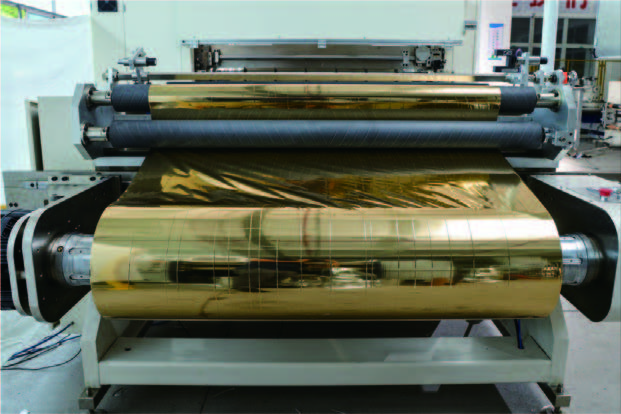
Second, the empowering value of the packaging and printing industry
1. Efficiency improvement
◦ The slitting speed is increased from the traditional 150m/min to more than 300m/min, and the production efficiency is increased by 40%+ with the automatic roll changing system.
◦ Reduce manual intervention (e.g., traditional manual tool adjustment) to achieve 24-hour continuous production.
2. Cost optimization
◦ Precise slitting can reduce the loss rate of hot stamping foil from 5% to less than 1%, significantly reducing material costs.
◦ Modular design extends the life of key components and reduces maintenance costs by 30%.
3. Quality upgrade
◦ High-precision slitting ensures that the edge of the bronzing pattern is free of jagged teeth and the registration error is <0.1mm, which meets the high-end needs of luxury packaging.
◦ Support customized slitting (special-shaped, narrow coils) to expand the design boundaries of hot stamping process.
4. Green production
◦ Solvent-free dry slitting technology avoids VOCs emissions, and the waste recycling system achieves a <0.5% of metal foil residue.
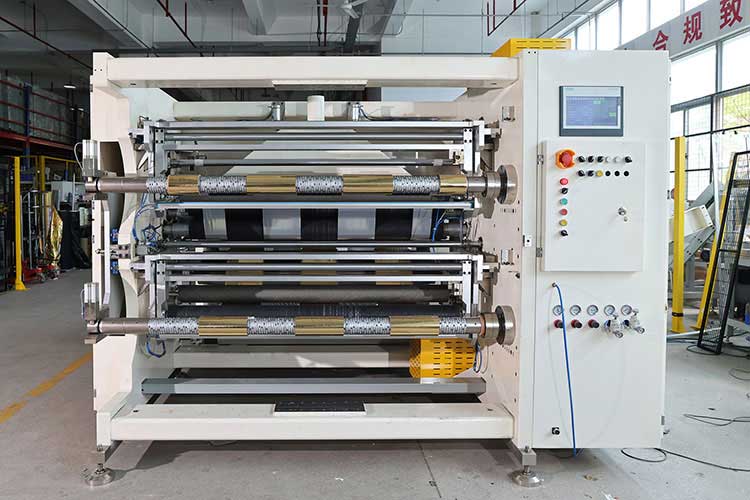
Third, industry application scenarios
• Tobacco & Alcohol Packaging: Precise cutting of mirrored gold foil to achieve a highly reflective logo effect.
• Cosmetic box: ultra-narrow slitting (less than 3mm) is used for fine line hot stamping.
• Label printing: with digital hot stamping process, it can realize small batch variable data slitting.
Fourth, future trends
1. Digital twin integration: Optimize slitting parameters through virtual commissioning and shorten changeover time.
2. Cross-process collaboration: linkage with the hot stamping machine to realize the integrated intelligent production line of slitting and hot stamping.
3. Sustainable material adaptation: Develop slitting solutions for bio-based films and biodegradable gold foils.
epilogue
The technological breakthrough of the hot stamping foil slitting machine is promoting the transformation of packaging printing from "experience-driven" to "data-driven". After the introduction of a new generation of equipment, the company can not only improve short-term production efficiency, but also lay a technical foundation for high-end and personalized market layout. It is suggested that the industry should pay attention to intelligent transformation while simultaneously training operators to adapt to the human-machine collaboration mode to maximize the potential of the equipment.
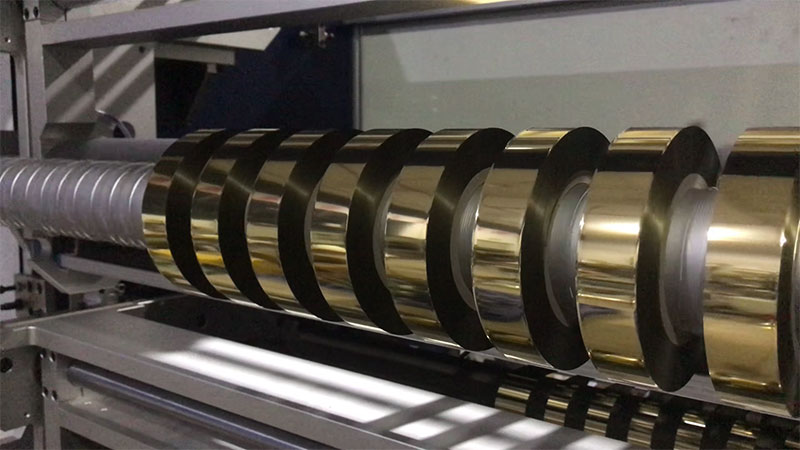 Speed and quality: how hot stamping foil slitting machine becomes the "invisible heart" of modern printing factories
Speed and quality: how hot stamping foil slitting machine becomes the "invisible heart" of modern printing factories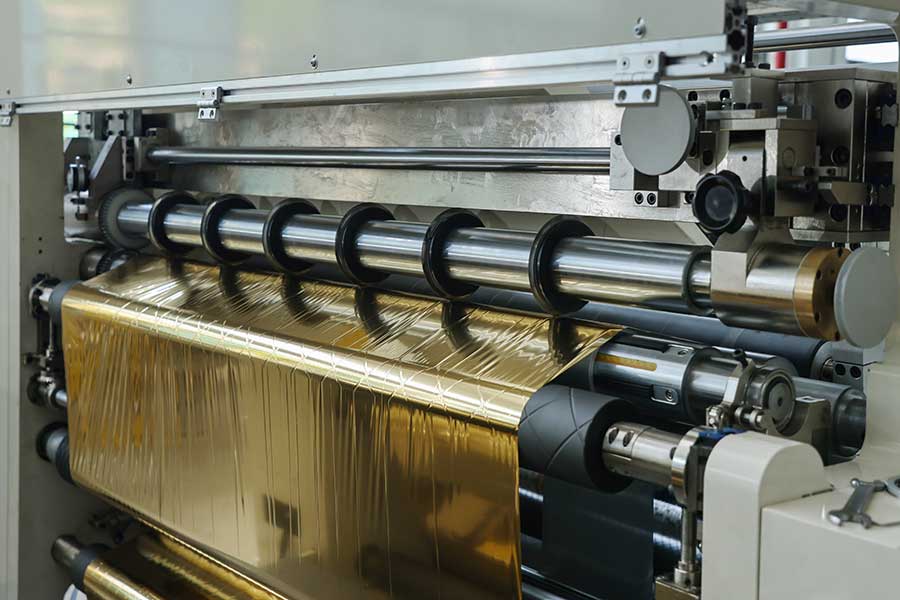 Hot stamping foil slitting machine: solve the last problem of hot stamping production
Hot stamping foil slitting machine: solve the last problem of hot stamping production The secret weapon of customized hot stamping: the intelligent hot stamping foil slitting machine
The secret weapon of customized hot stamping: the intelligent hot stamping foil slitting machine Hot stamping foil slitting machine: Make every inch of gold leaf the best of it
Hot stamping foil slitting machine: Make every inch of gold leaf the best of it Choose the right device! A complete guide to the purchase of hot stamping foil slitting machine
Choose the right device! A complete guide to the purchase of hot stamping foil slitting machine